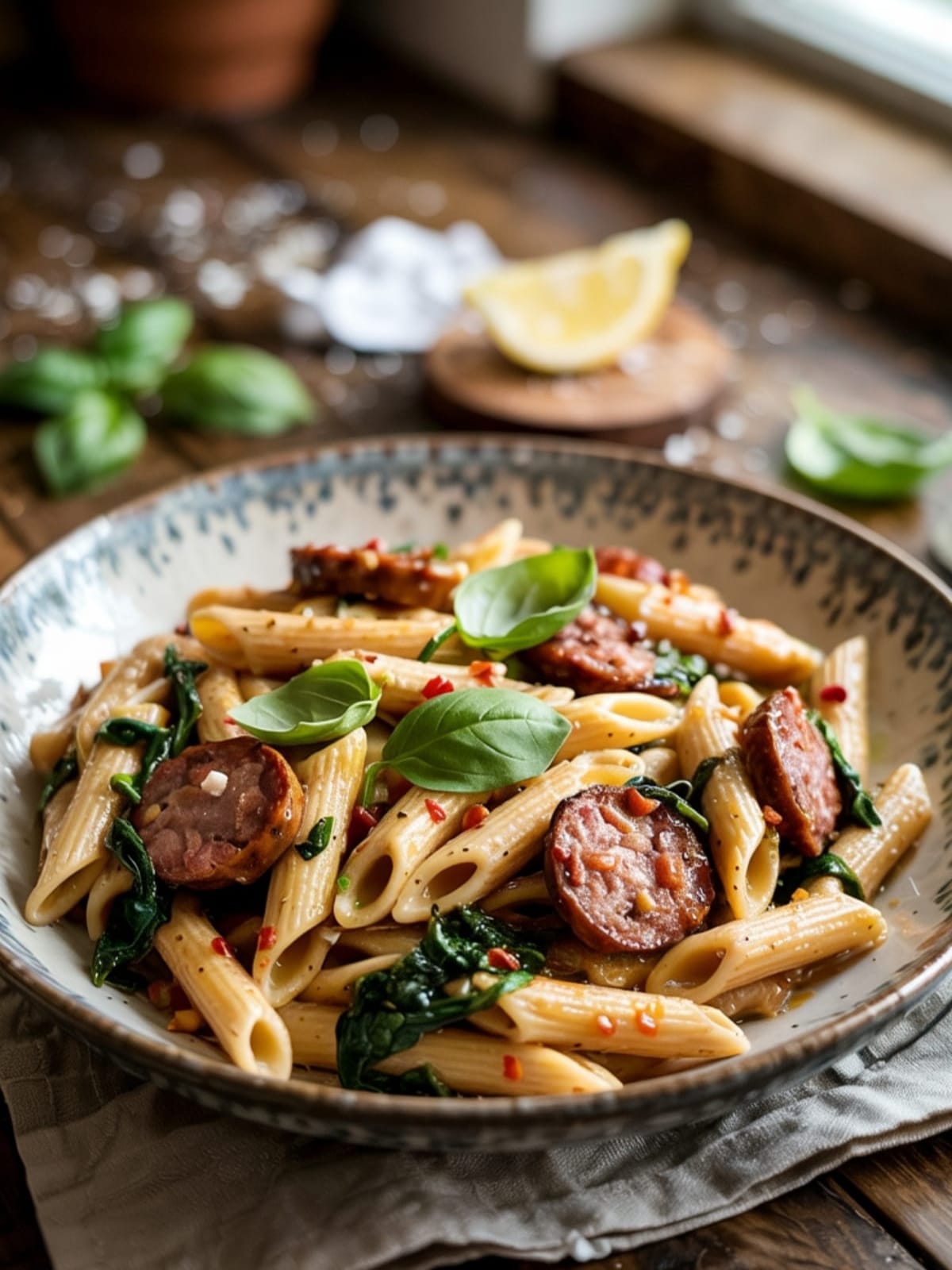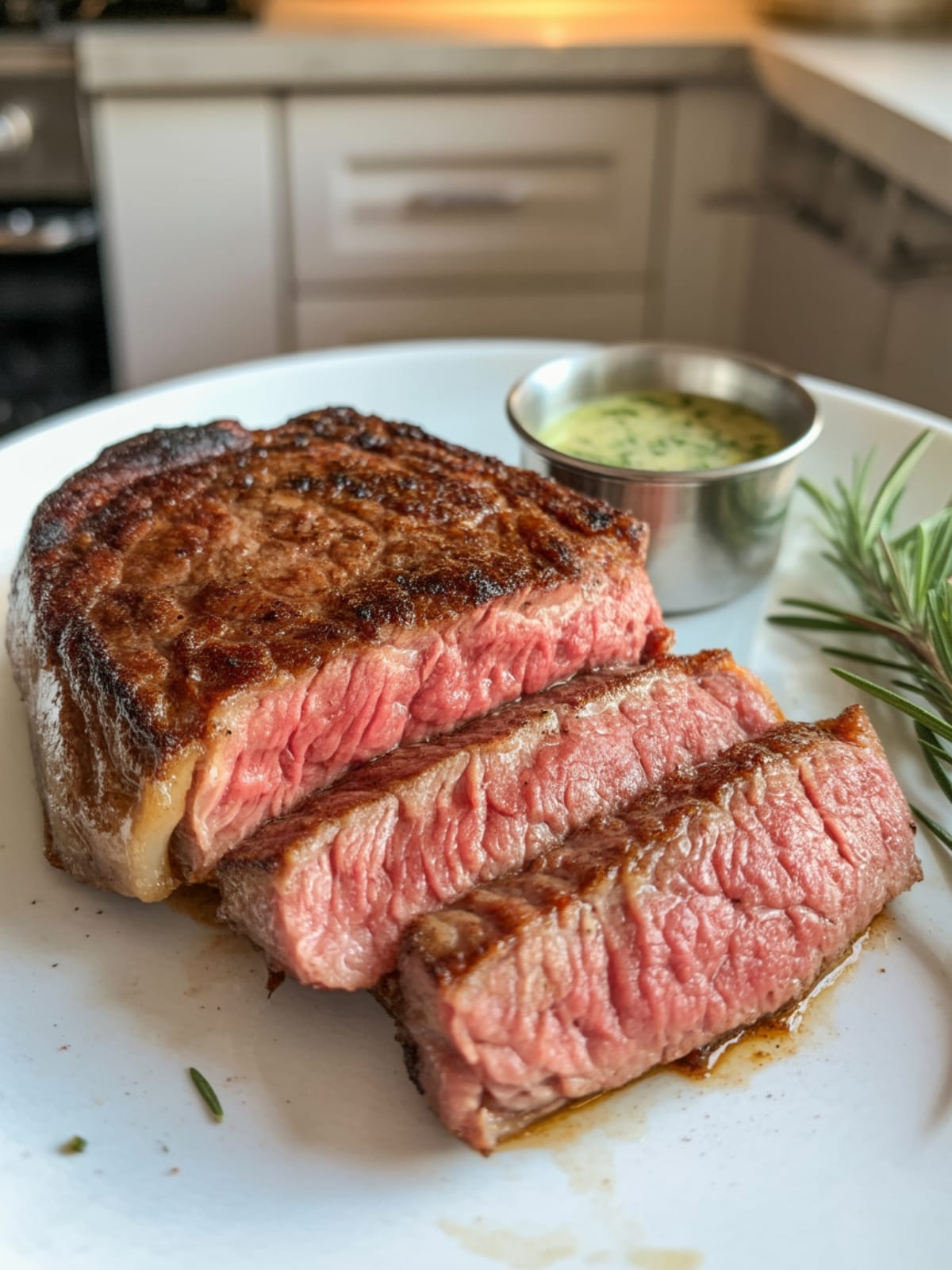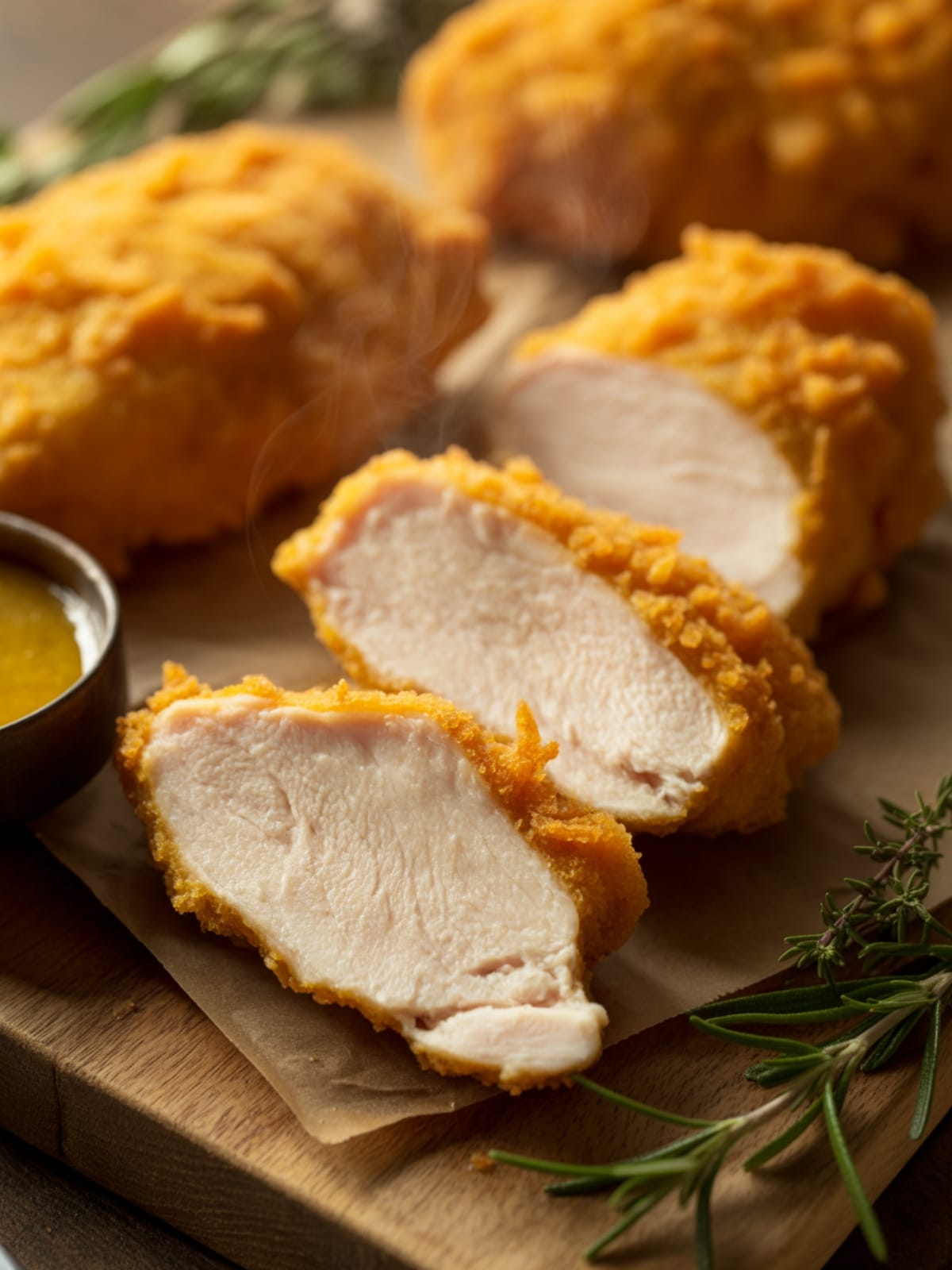Let’s face it—when someone mentions “dairy-free” and “gluten-free” in the same sentence, most people mentally prepare themselves for a meal that tastes like cardboard’s less flavorful cousin. But this sausage and spinach pasta is here to shatter those low expectations. It’s the kind of dish that makes you forget you’re eating something that accommodates dietary restrictions because you’re too busy reaching for seconds.
Why This Recipe is Awesome
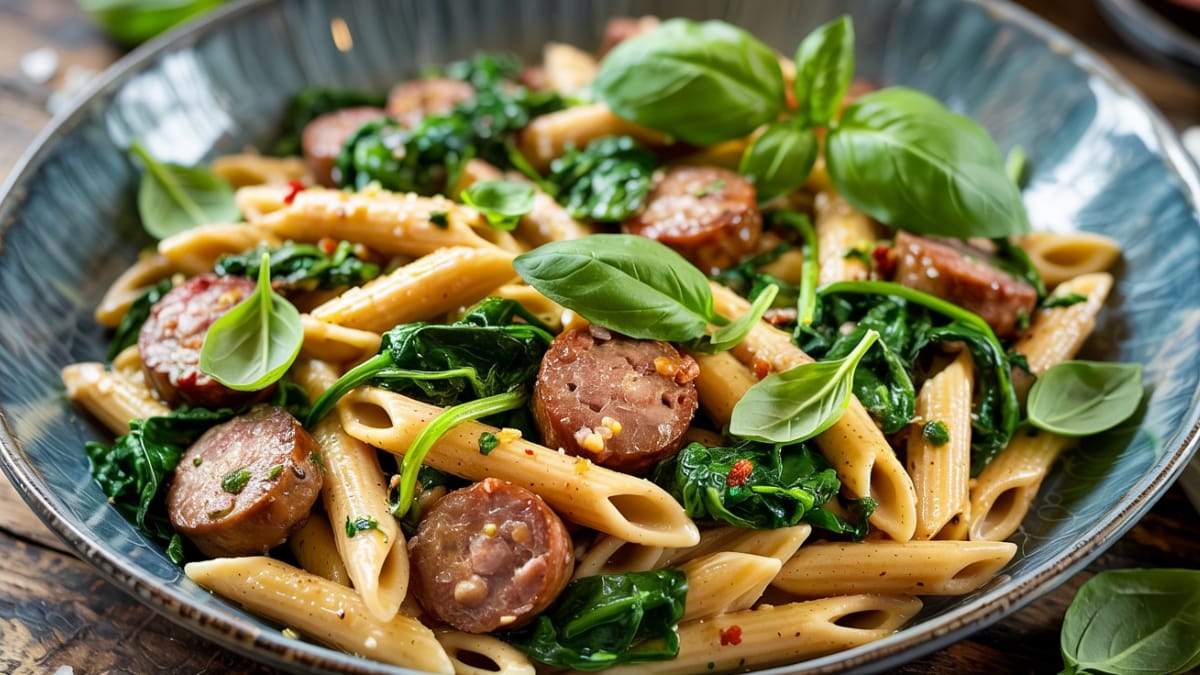
This sausage and spinach pasta doesn’t just grudgingly accommodate dietary needs—it celebrates them. It’s what I call “accidentally allergen-friendly” cooking, where the dish is naturally free of dairy and can easily be made gluten-free without feeling like you’re making sacrifices or complicated substitutions.
The secret weapon is the combination of olive oil and starchy pasta water. Together, they create a silky, luxurious sauce that clings to every strand of pasta without a drop of cream or butter in sight. It’s kitchen alchemy at its finest—turning simple ingredients into something greater than the sum of their parts.
Plus, this recipe is impressively versatile. Serving a mixed crowd of dietary preferences at a dinner party? This dish has your back. Need easy dairy-free lunch ideas that reheat well for work? Check. Looking for something that feels indulgent but won’t leave you in a food coma? You’ve found it. It’s essentially the Swiss Army knife of pasta dishes.
And did I mention it comes together in about 30 minutes? Because nothing says “I’ve got my life together” quite like a delicious, dietary-restriction-friendly meal that doesn’t require half your day to prepare.
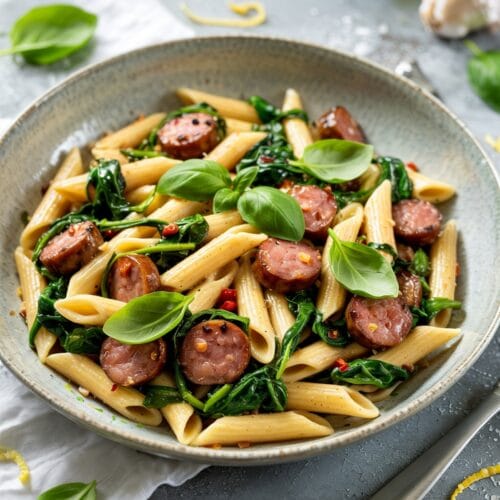
Sausage and Spinach Pasta
Ingredients
- 12 oz gluten-free pasta spaghetti, penne, or fusilli work well
- 1 pound Italian sausage casings removed (check labels for dairy-free and gluten-free options)
- 3 tablespoons olive oil divided
- 1 medium onion finely diced
- 4 cloves garlic minced
- ¼ teaspoon red pepper flakes adjust to taste
- 1 cup low-sodium chicken broth check for gluten-free if needed
- 8 oz fresh spinach about 6 cups
- 1 tablespoon fresh lemon juice
- 1 teaspoon lemon zest
- ¼ cup fresh basil torn or roughly chopped
- ¼ cup dairy-free Parmesan alternative optional
- Salt and freshly ground black pepper to taste
- Additional olive oil for drizzling
Instructions
- Bring a large pot of generously salted water to a boil. Cook the gluten-free pasta according to package directions, but check it 1-2 minutes before the suggested time—gluten-free pasta can go from perfect to mushy very quickly.
- Before draining, reserve 1 cup of the starchy pasta water. This is crucial for creating your silky sauce later! Drain the pasta but do not rinse it.
- While the pasta cooks, heat 1 tablespoon of olive oil in a large skillet over medium-high heat. Add the Italian sausage, breaking it up with a wooden spoon as it cooks until it's browned and cooked through, about 5-7 minutes.
- Transfer the cooked sausage to a plate lined with paper towels to drain excess fat, but don't clean the skillet—those browned bits are flavor gold.
- Reduce heat to medium and add the remaining 2 tablespoons of olive oil to the same skillet. Add the diced onion and cook until softened, about 3-4 minutes.
- Add the minced garlic and red pepper flakes to the onions and cook for another 30 seconds until fragrant. Watch carefully so the garlic doesn't burn.
- Pour in the chicken broth, using it to deglaze the pan by scraping up any browned bits from the bottom. Let it simmer and reduce by about half, approximately 3-4 minutes.
- Return the cooked sausage to the skillet. Add the spinach in batches, stirring until wilted before adding more. This should take about 2 minutes total.
- Add the cooked pasta directly to the skillet along with ¼ cup of the reserved pasta water. Toss everything together over medium heat until the pasta is well coated and the sauce begins to thicken slightly, about 1-2 minutes.
- If the mixture seems dry, add more pasta water, a little at a time, until you reach your desired consistency.
- Remove from heat and stir in the lemon juice, lemon zest, and fresh basil. Season with salt and pepper to taste.
- Serve immediately, topped with dairy-free Parmesan if using, and a light drizzle of good olive oil.
Notes
- The quality of your olive oil matters here since it’s a key flavor component. Use the best you can afford.
- For meal prep, store the pasta and sauce separately to prevent the pasta from absorbing all the liquid.
- This dish reheats beautifully with a splash of water or broth to loosen the sauce.
- For an extra flavor boost, add a handful of pitted, chopped olives or sun-dried tomatoes with the spinach.
- Not all gluten-free pastas are created equal. Brown rice or corn-based varieties tend to hold their shape better than some others.
Calories & Nutritional Info
- Calories: Approximately 550 per serving
- Protein: 25g per serving
- Carbs: 55g per serving (varies by pasta type)
- Fat: 28g per serving
- Fiber: 8g per serving
- Sodium: 480mg per serving (using low-sodium broth and moderate salting)
Common Mistakes to Avoid
- Overcooking the gluten-free pasta. It can quickly turn mushy, so start checking for doneness early and aim for al dente.
- Forgetting to reserve pasta water. This starchy liquid is essential for creating a silky sauce without dairy.
- Rinsing the pasta after cooking. This removes the surface starch that helps the sauce cling to the pasta.
- Adding the garlic too early. It burns easily and can make the whole dish bitter.
- Not breaking up the sausage enough while cooking. You want small, bite-sized pieces that distribute throughout the dish.
Alternatives & Substitutions
- Protein options: Turkey or chicken Italian sausage for a lighter version, or plant-based sausage for a vegan meal. Ensure whatever you choose is dairy-free.
- Greens variations: Kale or Swiss chard make hearty alternatives to spinach (they’ll need a few minutes longer to cook).
- Pasta alternatives: Chickpea pasta adds extra protein, or use spiralized zucchini for a lower-carb option.
- Flavor boosters: Add 1/4 cup nutritional yeast for a cheesy flavor without dairy, or a tablespoon of dairy-free pesto for depth.
- Broth substitutes: Vegetable broth works perfectly for a vegetarian version.
- Add more vegetables: Cherry tomatoes, bell peppers, or mushrooms all work wonderfully in this dish.
FAQs
How do I make sure my Italian sausage is both dairy-free and gluten-free?
Always check labels carefully. Many Italian sausages are naturally dairy-free, but some contain cheese or cream. Similarly, most are gluten-free, but some may contain breadcrumbs or other gluten-containing fillers. When in doubt, ask your butcher or look for specifically labeled products.
Can I make this ahead for a dinner party?
Yes! You can prepare the sausage and spinach mixture up to a day ahead, then cook the pasta fresh when you’re ready to serve. Reheat the sauce, add the fresh pasta and a splash of pasta water, and finish with the lemon and basil.
What’s the best gluten-free pasta for this dish?
Corn-rice blends or brown rice pastas tend to hold their shape best. Brands like Jovial, Tinkyada, and Barilla Gluten Free often get high marks for texture and flavor.
How can I make this dish more substantial?
Add more vegetables like roasted red peppers or zucchini, or include a can of drained and rinsed white beans for extra protein and fiber. For a lunch that will keep you full all afternoon, increase the protein portion.
Is there an alternative to chicken broth to make this completely vegetarian?
Absolutely! Vegetable broth works perfectly. You can also use mushroom broth for a deeper, earthier flavor that complements the sausage (if using plant-based) especially well.
Final Thoughts
This sausage and spinach pasta is the perfect example of how “free-from” cooking doesn’t have to mean “free from flavor.” By focusing on what we can include rather than what we’re avoiding, we end up with a dish that’s satisfying, adaptable, and delicious by any standard—not just “good for being dairy-free and gluten-free.”
Whether you’re cooking for someone with dietary restrictions, preparing for a dinner party with mixed dietary needs, or simply looking for a quick, satisfying meal that happens to be allergen-friendly, this pasta delivers. It’s proof that with the right techniques and ingredients, you can create something that everyone at the table will enjoy, regardless of their dietary preferences. And isn’t that what sharing food is all about?
